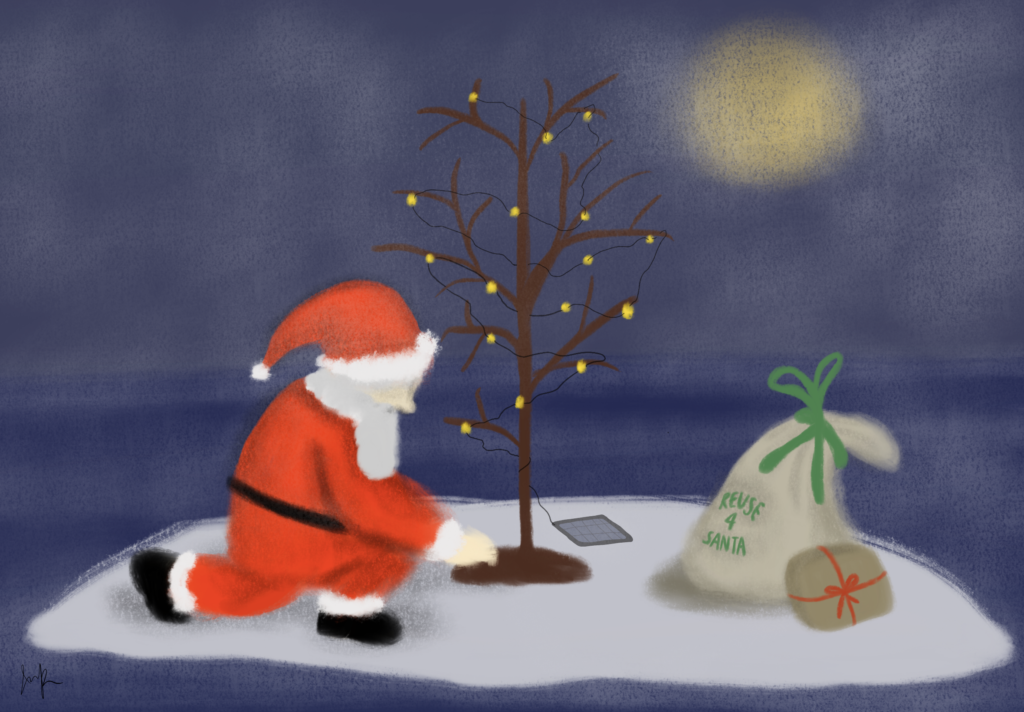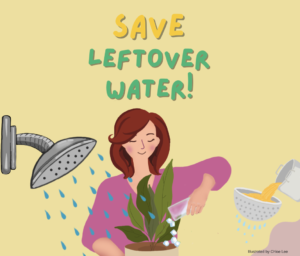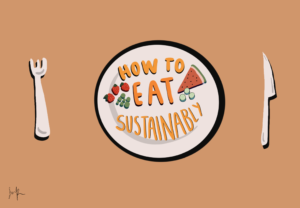
Undoubtedly, for many people, the Holiday season is “the most wonderful time of the year.”
Yet modern-day holiday delights come at a great cost. The growth in online retail, tempting end-of-season sales, convenient take-out meals, and heavy commercialization of this “wonderful time of year” has encouraged shoppers to spend impulsively on unnecessary products.
During the holiday period from Thanksgiving to New Year, Americans generate 25% more trash than any other time of year. Holidays are also the largest reason behind the 70 billion pounds of food waste sent to landfills annually.
But as we all know, the solution is not to cease our holiday celebrations. Whether it is Diwali, Hanukkah, Christmas, Kwanzaa, or other special days, the holidays are a crucial aspect of our culture and lives. That being said, it is our responsibility to limit our environmental impact while enjoying the same level of festivity.
Here are a few suggestions:
Gift Wrapping
Americans produce an estimated 4.6 million pounds of wrapping paper. Half of it ends up in landfills.
How can YOU help?
Switch wrapping paper with:
1. Repurposed newspapers, brown paper bags, and old maps
2. Fabric
3. Mason Jars
4. Beer boxes, amazon boxes
5. Cookie tins, tea boxes
Rice Glue
Do you have leftover rice? Don’t throw it out!
You can make homemade glue from rice, and it’s quite simple!
Ribbons
Two feet of holiday ribbons per family could tie a bow around the entire globe. Roughly 38,000 miles of ribbon.
How can YOU help?
Switch ribbons with:
1. Raffia
2. cut strips of old t-shirts
3. Cottom ribbon
4. Burlap
Less Meat
Meat is an essential part of many people’s holiday traditions. But if you’re feeling sustainable this year and want to help reduce emissions, try out some delicious vegetarian or vegan holiday recipes!
Buying Local
Reduce food miles and carbon emissions! Also, show some gratitude to local food producers by choosing fresh local foods for your holiday meals!
Gifting Wisely
1. Try to make presents with what you already have.
2. Give gifts that encourage others to make less waste (ex: Christmas leftover cookbook)
3. Give a house plant!
Lights
1. Switch your lights to LED. They are 90% more efficient than traditional Christmas lights and last longer.
2. Or, buy solar-powered LED lights.
3. Outdoor mini lights
MOST IMPORTANTLY: Turn lights off when you don’t need them.
Tree
Artificial or real?
Unless you are going to buy one artificial tree and use it for decades, remember that artificial trees, made of plastic and metal, have a large carbon footprint and will end up in a landfill, polluting our environment.
You can choose a tree from a sustainable farm!
Or choose a live potted tree that you can use for years.
Chip and mulch the tree!
Leftovers
As you may already know, leftovers can be turned into easy and delicious meals for the rest of the week!
Check out some recipes here:
Cards
This Christmas, make your own card! Or choose an e-card instead. Here are more ideas on how you can make card-giving on Christmas more sustainable.
TIP: If you do want to send a card, look for the Forest Stewardship Council (FSC) mark – it guarantees sustainable and ethical sourcing.
Reusables
1. Bring a reusable cup with you to stores! At Starbucks, if you’re dining in, you can even ask for “for-here-ware.”
2. Tote bags or chico bags to the grocery store! They are also more durable.
3. Don’t serve plastic cutlery at your evening feasts.
Ornaments
Have you ever thought of hanging beautifully baked biscuits on your Christmas Tree?
You can get creative and choose sustainable material to ornate your tree.
ex: biscuits, natural red berries, mistletoe, paper and twin DIY wreaths
Those are only a few simple suggestions to make your holidays more sustainable!
As the end of the year approaches, you can also choose to explore and appreciate nature and different cultures around the world.
Nature:
Spend a night searching for shooting stars and constellations while star gazing. Or listen to the chirping of birds while bird watching. Discover insects and animals on your hike through the forests or mountains. Or maybe just find a quiet spot outside in nature and relax.
Cultural Connections: These are just a few examples!
Oktoberfest – Second to last Saturday in September – First Sunday of October
Annual beer festival and a traveling carnival in Munich, Germany.
Feast of Tabernacles (Sukkot) – September 15 – October 6
Torah-commanded holiday, one of the Three Pilgrimage Festivals.
Chuseok – September
Mid-autumn harvest festival in South Korea
Diwali – The date changes every year (October)
5-day celebration, including food, fireworks, colored sand, special candles, and lamps.
Día De Los Muertos – Oct 31 – Nov 2
Two-day Mexican holiday that reunites the living and dead.
Makahiki – October/November – February/March
Traditional Hawaiian celebration of the harvest
Day of the Virgin of Guadalupe – Dec 12
Mexican national holiday recounting the story of the appearance of Mary to Juan Diego.
Soyal – December 22
Hopi and Zuni new year celebration of renewal and purification.
Chinese New Year – Usually between Jan 21-Feb 20
Celebration of a new year on the traditional lunisolar and solar Chinese calendar.
The views and opinions expressed are those of the authors and do not necessarily reflect nor represent the Earth Chronicles and its editorial board.














